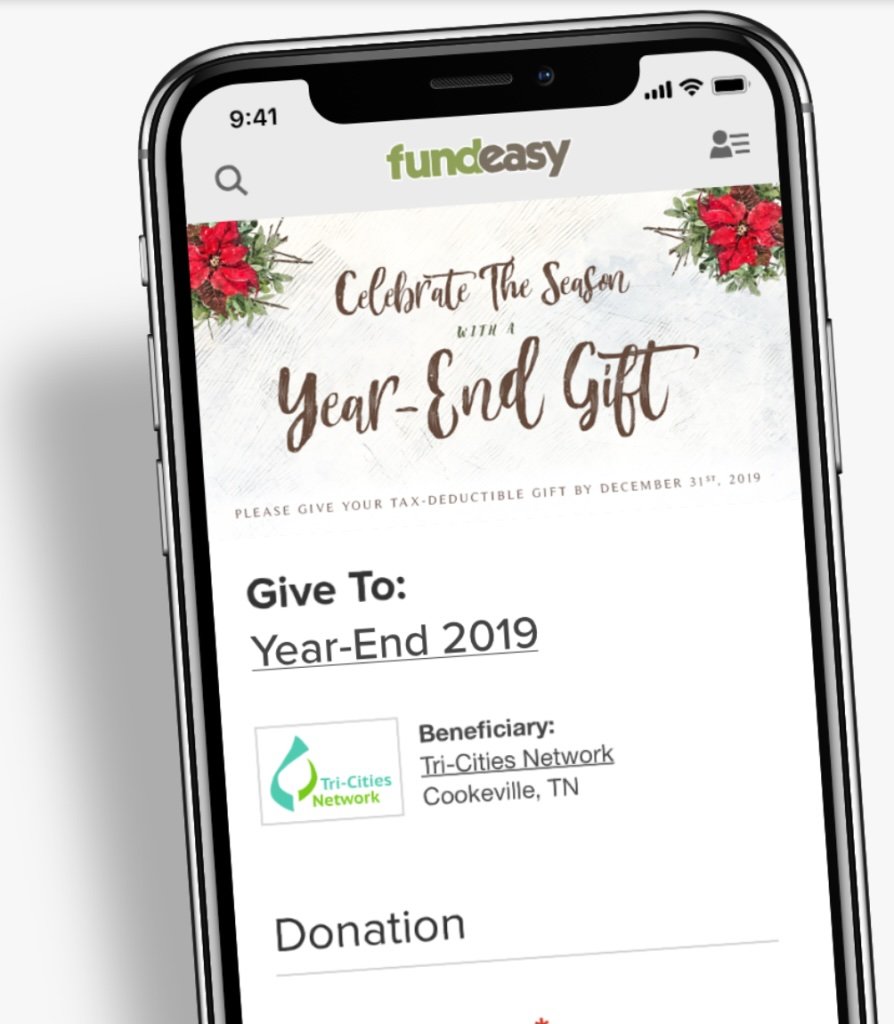7 Year-End Fundraising Tips

The end of the year is a busy time for nonprofits. In addition to all of your regular daily tasks, you are also likely running a big year-end push for extra donations. People like to give this time of year, not just because of a spirit of generosity around the holidays but because of the last chance to make a tax-deductible donation.
Whether you’ve had your plan ready to go for months or are just now sitting down to map everything out, we hope these seven tips are helpful as you execute a successful year-end fundraising campaign. Be sure to also check out our recent webinar on the same topic!
1. Be Clear About Your Goal
Every nonprofit is trying to raise additional funds at the end of the year, and your donors likely give to more than just yours. Many nonprofits are vying for your donors’ dollars, so to stand out and inspire your donors to give, make sure you’re clear about your goal. Are you just raising money at the end of the year because people are more likely to give then, or do you have a goal you can’t accomplish without your donors’ support?
As you communicate with your donors, tell them WHY their donation matters. Share stories of impact and cast vision for how you’ll be able to serve more people in meaningful ways moving forward because of their support now. Your donors have busy lives, especially around the holidays, but they care about your mission, so remind them of your needs and goals!
2. Segment Your Lists
This step is often overlooked but is vitally important so you make the right ask to the right people. Segmenting can take a lot of work initially but it’s worth it in the end! And it’s honoring to your donors by not asking for something extraordinarily outside of their ability to give, or only asking for a fraction of what they were potentially planning to give.
You may choose to utilize a matching gift challenge, which is a great way to ask your high-capacity donors to be involved. Pick a date that people need to give by for it to go towards your goal and count as part of the challenge. Deadlines are highly motivating so don’t forget to set one! Then let your donors know about the challenge so they can be part of your exciting year-end fundraising efforts.
3. Make It Easy For People To Give
This year we’re offering FREE year-end campaign pages as a gift to you to not only streamline your efforts but to make it easy for people to give by keeping everything in one page. These campaign pages are easy to set up, taking up less than 10 minutes of your time, and come with ready-to-go, professionally designed graphics. They also include free year-end marketing tips. Choose a #GivingTuesday campaign page or year-end campaign page (or both) to help with your year-end fundraising goals.
We know the end of the year can be a stressful time, and creating a custom landing page is likely the last thing you have time for. Sign up for your free campaign page today and knock several items off your already packed to-do list at the same time!
4. Utilize Multiple Platforms
There are so many ways to communicate with your donors today and it can feel overwhelming sometimes. Instead, lean into all the platforms and take advantage of the fact that you can communicate with your donors where they most like to receive information!
This is the easiest platform to use and most of your donors use Facebook, especially Boomers and Gen X. Utilize posts on your page and paid ads to share about your organization and invite people to give to your campaign. Only about 5% of your audience sees your posts at any given time, so post often! Use the same color scheme in all of your posts to help people recognize them as part of a campaign.
This is also a popular platform, especially for your Gen X and Millennial donors. Utilize posts and stories to talk about why you’re passionate about the campaign and why their support is vital. A lot of people forget to post stories, but this is a highly effective space because many Instagram users don’t scroll through their feed as much and might miss your posts. At the very least, share your post to your story so people can click through to see it!
Don’t be afraid to send multiple emails throughout November and December. People are busy and may miss one or two, but will want to read your updates and engage when they can.
Remember to always include a link to your donation page so it’s very easy for people to give. Make sure you include your volunteers and church supporters in these emails so they can be aware of what’s going on and stay engaged!
Direct Mail
Even though much of our communication is now digital, direct mail is not dead! Direct mail letters can be longer than emails, so include stories and photos, and include a compelling ask. You can include a return device and stamped envelope to make it easy for people to drop a check in the mail and also include information on how people can give online if they prefer that.
5. Keep it Visual!
A picture is truly worth a thousand words. Pictures put a face on your mission, so as you share your need for funds, use visuals in a variety of ways to compel people to give.
Client pictures
It may not always be possible to use client photos, but try to use them whenever you can. A real photo brings an authenticity and is a powerful piece of your story. Be sure to have their written permission before including a client photo in your print or digital materials.
When you don’t have an actual client photo, you can use stock photos. You want your donors to feel connected to the people your organization serves, so pick photos that are representative of the people you serve. Unsplash.com and Pexels.com are free stock image sites that have thousands of photos you can choose from and they look more natural than “professional” stock images.
Testimonial videos
Creating simple client testimonial videos is also a powerful way to communicate the importance of your mission. Schedule a day of filming and pick a location that is well-lit with natural light. You can hire a film professional, or if your budget doesn’t allow for that, a well-staged iPhone video can communicate a powerful story to your donors.
6. Be a Storyteller
Stories are a powerful way to fundraise because they allow your donors to connect to your clients through sympathy and compassion. They move us more than data and facts. Stories give a glimpse into the lives of your clients to give your donors a better understanding of the mission they’re giving to when they donate.
It's also important to tell the story of your organization, letting people know why it was started and what it’s accomplished over the years. What does your community look like as a result of your work? How have your donors been a part of that? How can they be part of your organization expanding and serving more people?
7. Thank Your Donors Promptly!
This may be stating the obvious, but make sure you thank your donors for their past and future contributions. As they give as part of your current campaign, thank them quickly — don’t wait until your campaign is over to thank people for contributing.
You can thank them as they give by sending individual emails and thank you cards (if possible) to let them know how much you appreciate them. This helps encourage future engagement because they know their gift mattered.
Conclusion
We hope these tips help you survive and thrive during this busy season! Don’t forget to utilize our free year-end campaign pages to encourage giving and make things easier on your end. We wish you all the best as you engage with your donors and cast a big vision for the upcoming year of ministry in your community!
*Photos sourced from Unsplash.com
If you'd like to learn more about our Peer-to-Peer, Attendance, or Crowdfunding products, please reach out! We'd love to chat.
Also, if you haven't joined already, we have an exclusive Facebook Group just for our customers! If you are a current FundEasy Customer and would like to join, go here to learn more and request to be added!





